Why Using Cruise Control In The Wet Will Actually Help You
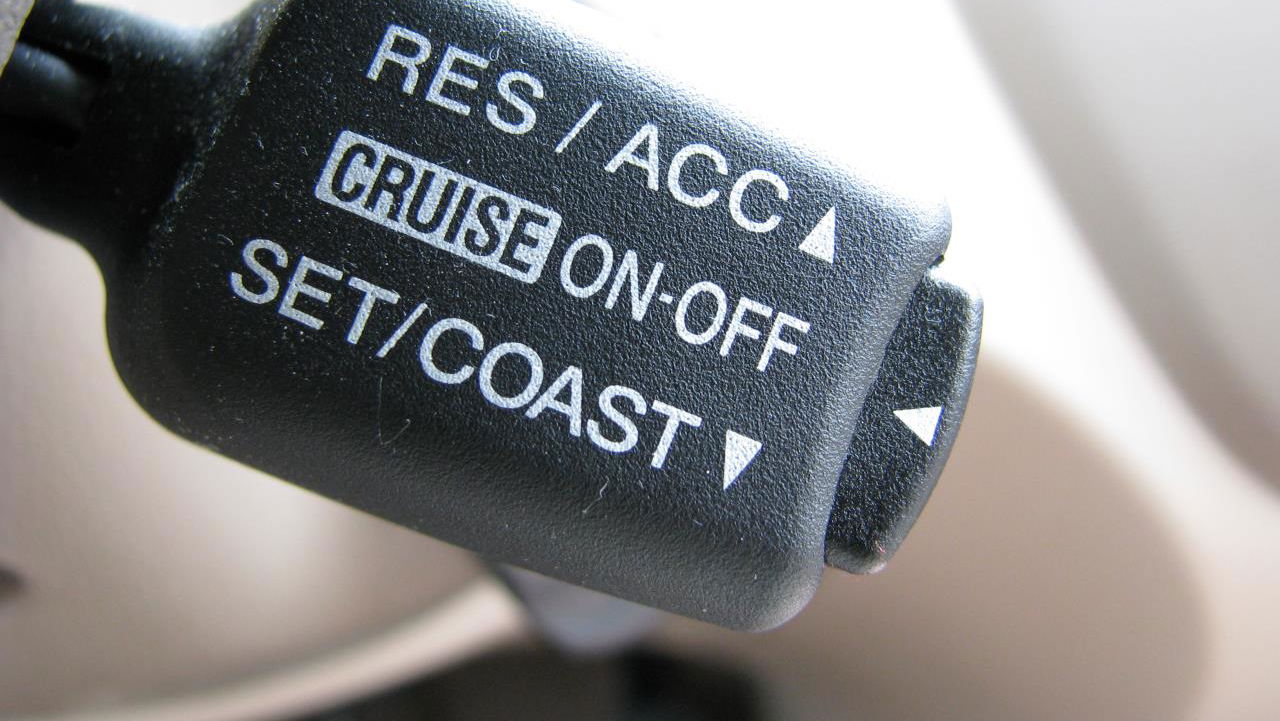
Cruise control has been a staple of motoring for over 50 years, being pioneered by the 1958 Chrysler Imperial as an ‘Auto Pilot’ function. But is it safe to rely on cruise control technology to take over and let you sit back and relax in the wet?
Myths of cars suddenly accelerating and causing large accidents due to a rogue cruise control system in the rain float around the internet and populate forums, pleading with the general public to avoid the lazy option of driving at all costs.
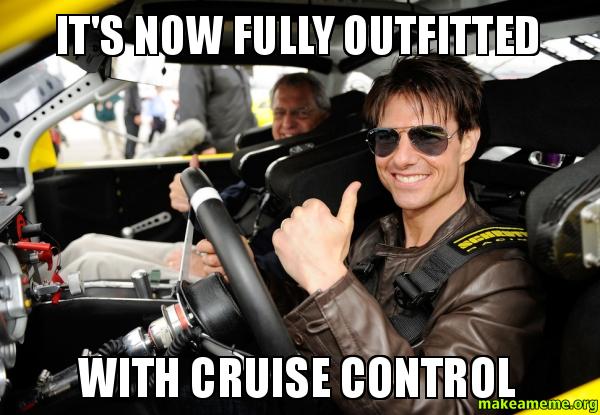
Most cruise control systems are switched off by manual inputs from the driver, be it through the brake pedal or throttle. This input breaks the electronic circuit that has been keeping the car’s speed constant and reverts back to manual speed control. Now think about the input needed to break that circuit in a scenario like a skid or aquaplane incident.
Braking or accelerating during a skid can cause the vehicle to become even more unsettled by throwing the weight of the vehicle forward and getting you in a larger heap of bother. And to understand exactly what’s going on, we need to look into the frictional interaction between the tyres and the road.
Friction occurs naturally when two substances come into contact with each other, and the force that this friction creates is found by knowing the coefficient of friction and the vertical force acting downwards into the surface, known as the ‘normal’ force.
The four wheels act as the points of contact between the car and the road and therefore the friction force is applied through these contact patches. The force produced by the friction of the tyres on the road is called the ‘rolling resistance’ and can be summarised by the following equation:

Now, more about the coefficient of friction. Denoted by the symbol ‘µ’, a high coefficient will mean the potential for a large friction force. As an average, tarmac generally has a ‘COF’ of 0.7 when dry. Predictably, rain on a road surface decreases that value down to around 0.4. This decrease in COF results in a decrease in friction between the tyres and the road leading to an inherent lack of control.

Now back to the cruise control. To keep a car travelling at a constant speed, a feedback loop transmits the car’s speed through to the ECU which will then adjust the throttle.
Let’s say you are on the motorway and then suddenly begin to lose control in the wet with cruise control on. The car is set up to keep proceeding at the speed chosen by the driver. And here enters the dangerous part. You’ll want to disengage the cruise control so that you can slow down so your immediate reaction may be to touch the brake pedal to break the circuit and take manual control of the car.
By hitting the brakes firmly in the wet conditions, you run the risk of locking the brakes which has an even larger effect on the coefficient of friction. By locking the wheels, only one constant area of tyre is in contact with the road, allowing the water to quickly lubricate the contact patch which can lead to a dangerous aquaplane. Unlike normal ‘rolling’ braking where the tyre contact patch is constantly being refreshed as the wheels are turning, a locking situation causes the coefficient of friction to plummet to an estimated 0.1-0.2, almost completely negating the driver of any form of control.
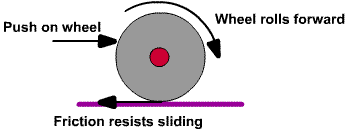
Thankfully, cruise control measures wheel speed as its primary input. As a car aquaplanes, the wheels will suddenly spin faster due to a lack of resistant friction so the control system will send feedback to the cruise control system to decrease throttle to try and match the original wheel speed before the skid. So essentially cruise control should try and reduce the effects of the uncontrollable skid rather than enhance them. Really, the ideal course of action is to try and steer into the skid with your feet fully off the pedals until traction is found again, in which case the brake can then be applied to disengage the cruise control and slow the vehicle to a safe speed.
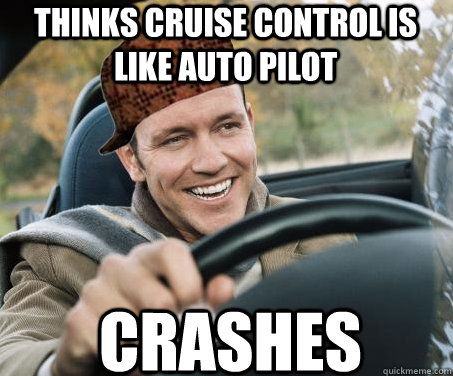
The RAC and other highway agencies will tell you to never use your cruise control in wet or icy conditions and they definitely have a point. It is always best practice to be in full control of your car in case of something like an aquaplane scenario. In terms of outright safety however, cruise control should actually help your car control itself in what can become a very serious situation.
So myths of cruise control making cars take off uncontrollably into motorway barriers? Absolute tripe.
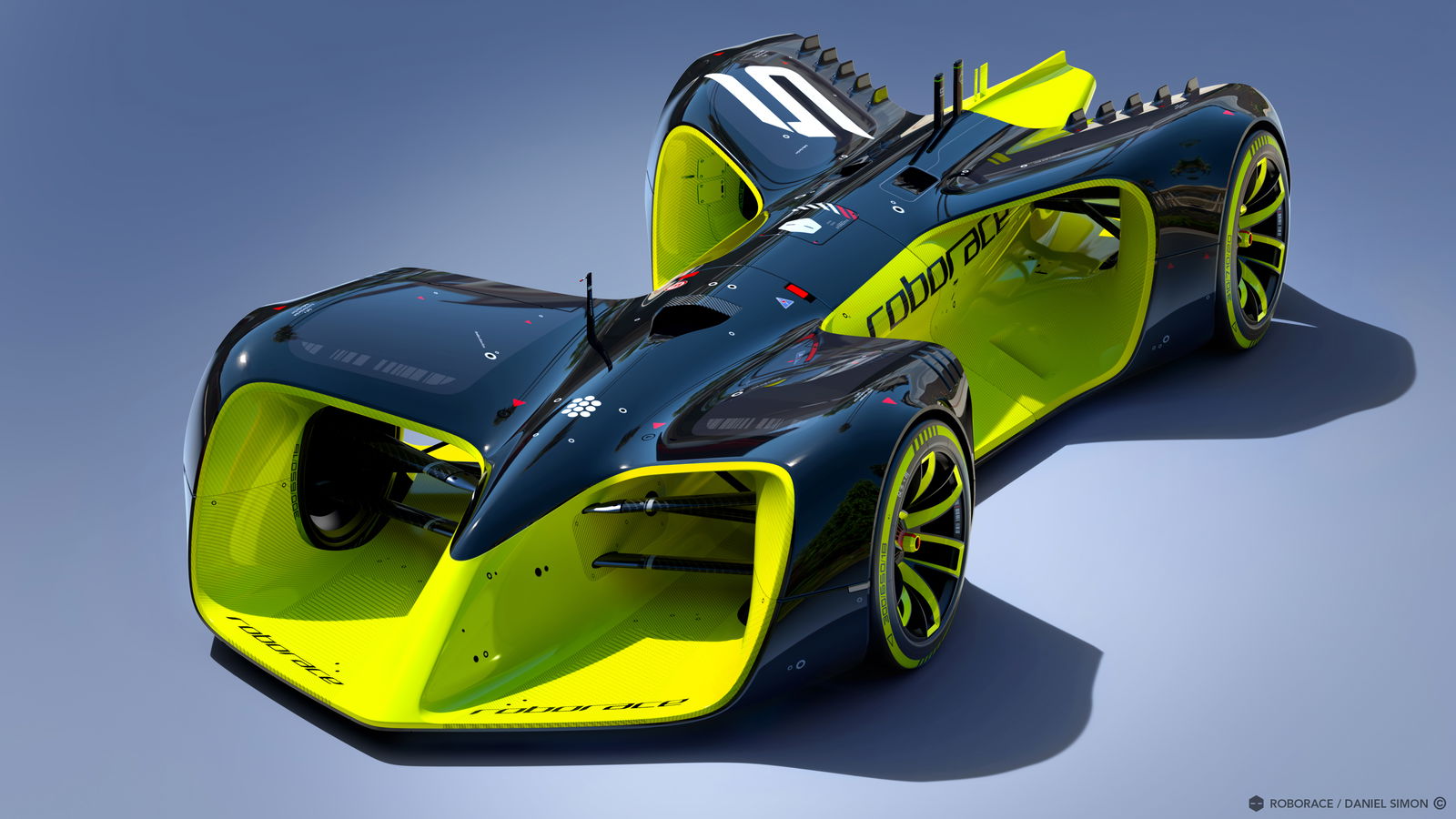
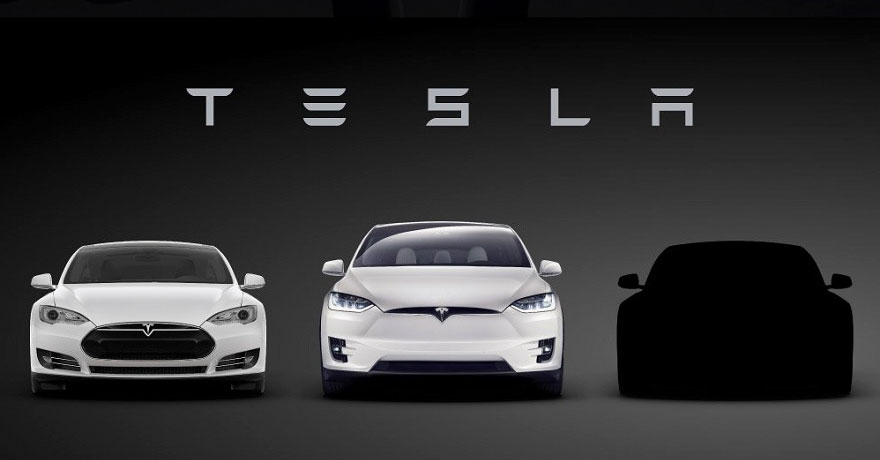
Comments
No no no no no no no. When you hit water and start aquaplaning, your car slows down. The cruise control tries to keep the wheels turning at the same speed it was set, causing the drive wheels to be spinning faster than the speed of the car. This will cause oversteer in a rear wheel drive car, and is why it is recommended never to use cruise control in wet or icy conditions.
You make some good points bWhen you drive in the rain you’re going to encounter deeper puddles of water in the road which aren’t nessesarily obvious since the rest of the road is wet. Those deeper puddles will actually slow your car down when you hit it. At that point your car is going to acclerate in an attempt to increase wheel speed but because of the reduced amount of traction the wheels could and will spin at an excessive rate. The cruise control will reduce power but it reacts much slower than a traction control system would and will allow wheel spin before it reduces throttle (assuming that your car does not have tracion or stability control). That could be especially dangerous mid-corner. I’ve also owned cars that would down shift aggressively and keep the RPMs unreasonably high when the car slowed down even slightly so I could see how things could cause problems, just not on every vehicle.
I doubt this is the case on older cars. My AE86 has cruise control :s
The E46 cuts power pretty much completely when it loses traction. This means when you start Aquaplaning around a bend the back end tries to snap round.
Had this happen to me a few times so far 😕
Don’t go telling pulling not to break when they go into a skid. if it’s small and less than 15 degrees of rotation sure try steering into it, but a road car has a very small steering angle (around 20 degrees on most cars). As soon as the back swings out more than that small amount you can not regain the control unless the road turns enough. If you have ABS, brake. It figures out how the cars turning and where you want to go, then brakes the wheels that need it. If you don’t have ABS, learn how to brake without locking your wheels, simple driving courses will teach you this.
If you’re in trouble, don’t try and be a god and end up in a tree at 80km/h, brake and worse case hit the tree at less than 80km/h. hard to accelerate with so much friction resistance and only momentum carrying you into the tree.
Use cruise control when you’re on an open road and you just want to cruise. Alas, CRUISE control. Radar guided cruise control would be the only time you’d use cruise control in traffic. Even then, if there’s other cars around or the road conditions aren’t optimal, just drive your bloody car with your arms and legs!
I actually 360 spun off the road in rain using cruise control. So I think the not using cruise control in the rain is correct. But my tires where bald anyway.
I live in Oregon. It is wetter here than a teenage girl at a Beatles concert in 1964. I think about this a lot. Thank you.
i thought that it was a factory recommendation that you do not use cruise control during wet weather. especially in older vehicles where the cruise control is simply keep the throttle in the position you left it.
Read in a Jeremy Clarkson voice.
“Cruise Control is only good if you live in Utah and work in Montreal”
Pagination